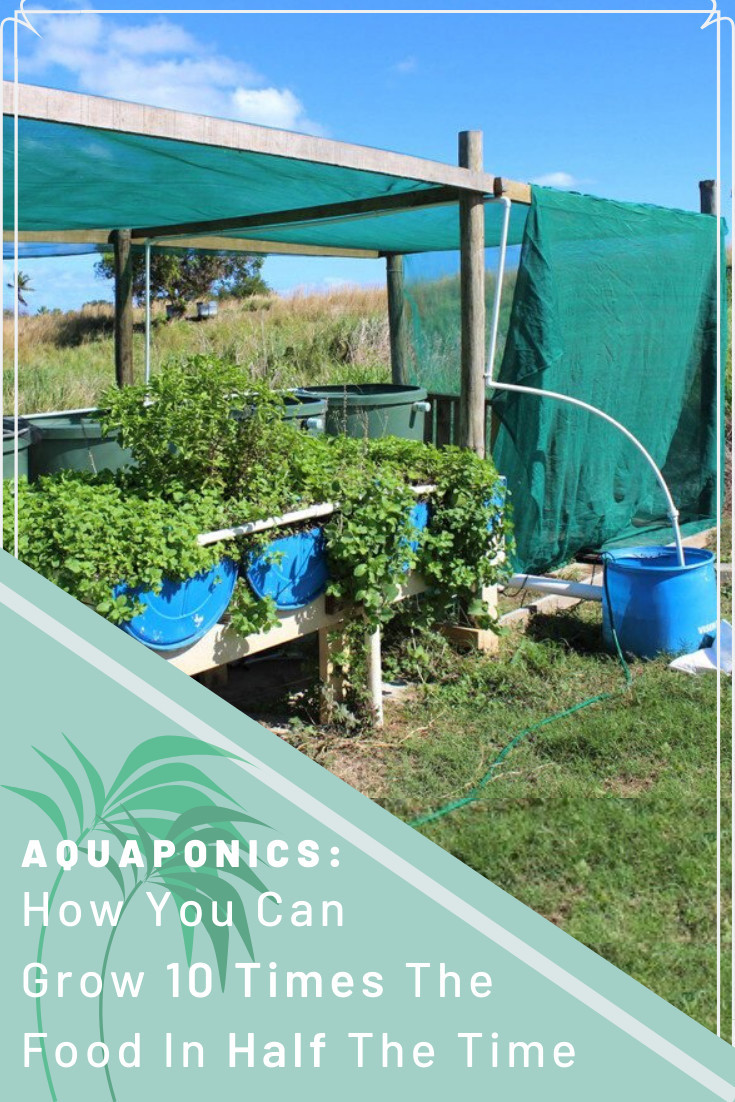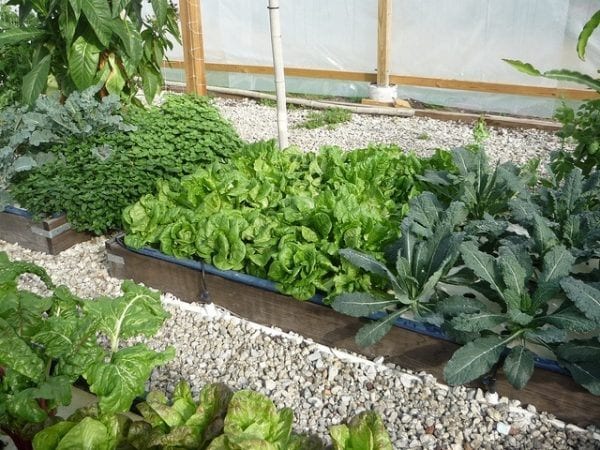
Image Credit: US Department of Agriculture @ Flickr
Aquaculture is the farming of fish and other aquatic life while growing plants in a nutrient solution instead of regular soil is called hydroponics.
Aquaponics combines these two methods of food generation into one.
The Aztec Indians that lived over a thousand years ago are credited with growing plants on rafts floating in lakes, but modern aquaponics is only a few decades old.
Many problems and one solution
Both aquaculture and hydroponics give good yield, but they are not without challenges.
In the case of hydroponics, special nutrient solutions are necessary for running the system successfully. They have to be constantly replenished as the plants use up the nutrients.
The resulting salt residues should be regularly flushed out of the unit.
As for aquaculture, large amounts of nitrogenous waste are generated by the fish and they have to be removed from the tanks as fast as possible. Safe disposal of this nutrient-rich water is a big challenge.
Channeling it to the water bodies has dangerous consequences. As the wastewater is removed, fresh water has to be added to maintain the water level.
Keeping the water aerated is important too.
The solution to the above problems lies in combining the two methods as they can complement each other.
Simply put, when the nutrient-rich wastewater from the aquaculture tanks is fed to the plants, they utilize the nitrogenous waste, effectively cleaning up the water, which can then be recycled.
However, it is not as straightforward as this; there are several steps to the process, many of it involving microorganisms that help breakdown some complex substances.
The Benefits of an Aquaponics System
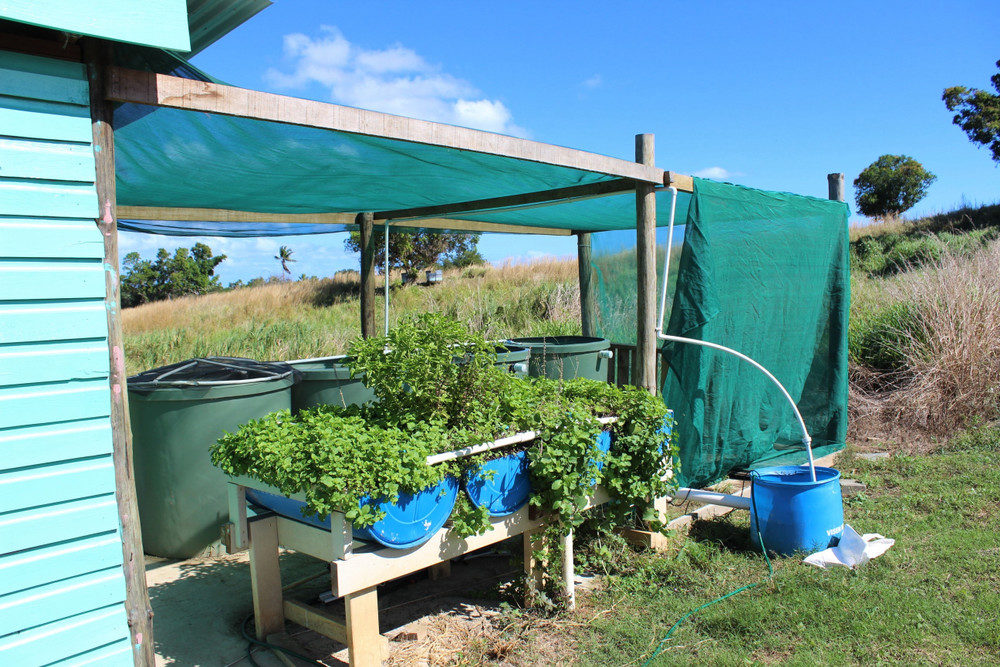
Many gardening enthusiasts invest in hydroponics only to be discouraged later by the cost of proprietary nutrient formula to be used.
Aquaponics negate the need for special nutrient solutions, so the system can be run without high recurring costs.
It provides high-quality protein and a variety of vegetables with minimal investment and running expenses.
It is hard to believe, but an aquaponics system requires only 10% of the water required for growing the same amount of food by traditional soil-based gardening.
Any home gardener can make and run an aquaponics system to increase his personal food production. It is as viable on small scale as it is for commercial food production.
The recycling of water takes care of the twin issues of waste water disposal and sourcing of fresh water. The absence of soil reduces soil-borne diseases and pests such as nematode worms.
Above all, it ensures healthy food free of chemical fertilizers, pesticides, and herbicides.
How Does An Aquaponics System Work?
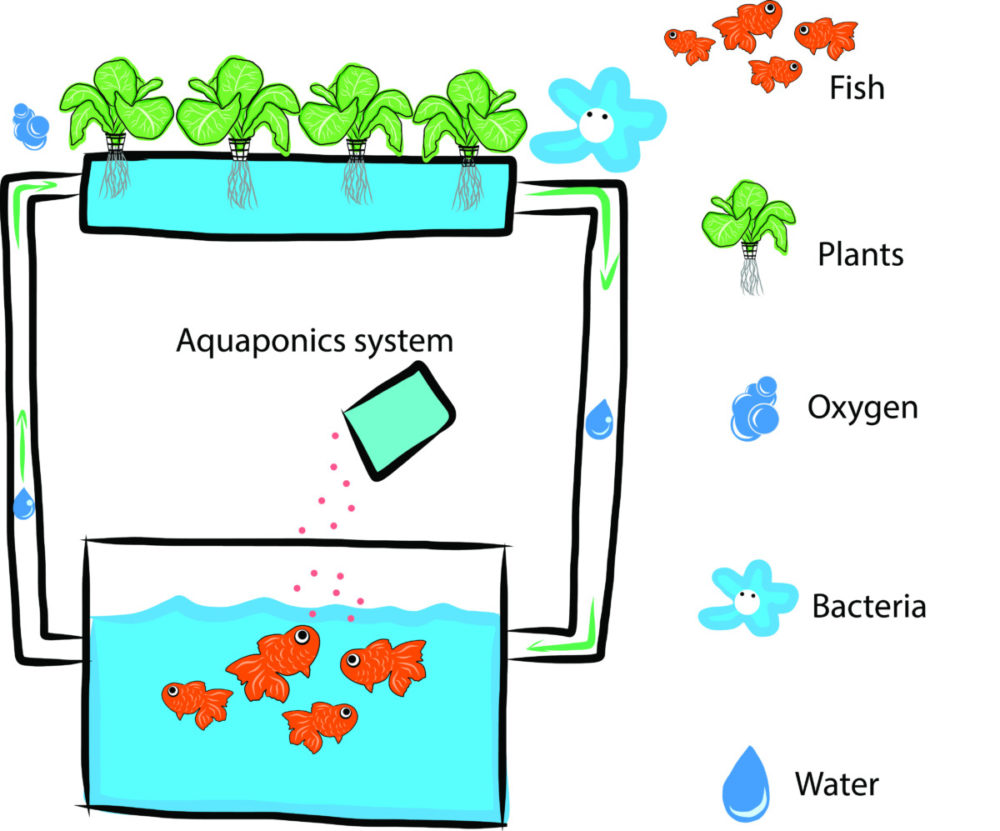
The simplest aquaponics system would be just growing a bunch of watercress on a piece of foam floating in your aquarium.
But for generating any significant amount of food, you will need an arrangement on a much larger scale. It involves a few pipes and pumps and a lot of biochemical reactions.
In a functional model of aquaponics, the aquaculture section, and the hydroponics sections are interconnected through pipes.
In the aquaculture section, the fish waste and the decaying food particles result in water with high concentration of ammonia and carbon dioxide.
This water is pumped into the hydroponic section where the plants are growing in an inert media like gravel or clay pellets. However, the plants cannot use the nutrients directly unless they are broken down further by microbial action.
Most of the cleaning process is accomplished by a large variety of microbes colonizing the surface of this media.
They break down solid waste and convert toxic substances into harmless byproducts before the clean water trickles back into the fish tank.
The nitrifying bacteria such as Nitrosomonas convert the ammonia into nitrites. Another type of bacteria known as Nitrobacter then converts the nitrites into nitrates that can be utilized by the plants.
This nitrogen cycle is at the heart of aquaponics.
The different options
You can choose from the different aquaponics systems that have been developed over the years. Although all of them essentially work on the same principle, they differ in the actual operation.
- Media-based aquaponics system – As the name implies, the plants are cultivated in grow beds filled with a chemically inert media. This is the most popular method, since plants of almost any type or size can be grown in the same bed. Small-scale farmers and home gardeners wishing to grow a variety of vegetables generally prefer this method.
- Raft-based deep water culture – In this system, the plants grow on floating rafts directly placed in the fish tank or in channels into which the wastewater is pumped out. Since the rafts may not support heavier plants with uneven structure, it is generally used only for small plants like leafy greens and herbs. Commercial monoculture often uses this method.
- Nutrient film technique – This another method developed for commercial hydroponics. The fish tank water is channeled in a thin film into gutters in which small plants are grown.
- Hybrid aquaponics – It combines the media-based and raft-based systems. The water from the tank is first passed through beds filled with media and then diverted into channels housing raft planting.
The planting beds are irrigated with the water from the aquaculture in two different ways.
Continuous flow system – In this system, a continuous flow from the fish tank to the grow beds is maintained with the help of a small water pump. The filtered water dripping down from the grow bed is directed to the fish tank.
Flood and Drain system – Instead of creating a continuous flow of water, the pump is worked intermittently to flood the grow beds for a fixed amount of time, which is then followed by a dry spell.
However, the media is never allowed to dry out completely because it can affect the microbial population. The on and off circuit is built into the pump for reliable working of the system.
Flood and Drain water circulation with media-based grow beds is considered the most efficient aquaponics system for a novice home gardener.
There are many minor variations to the general methods, so it may take some time to identify the right one for you.
Once you have decided on the type and capacity of the aquaponics system you want to install, your attention should be directed to selecting the right location and growing media and the types of fish and vegetables that you want to grow.
Choosing The Location For Your Aquaponics Setup
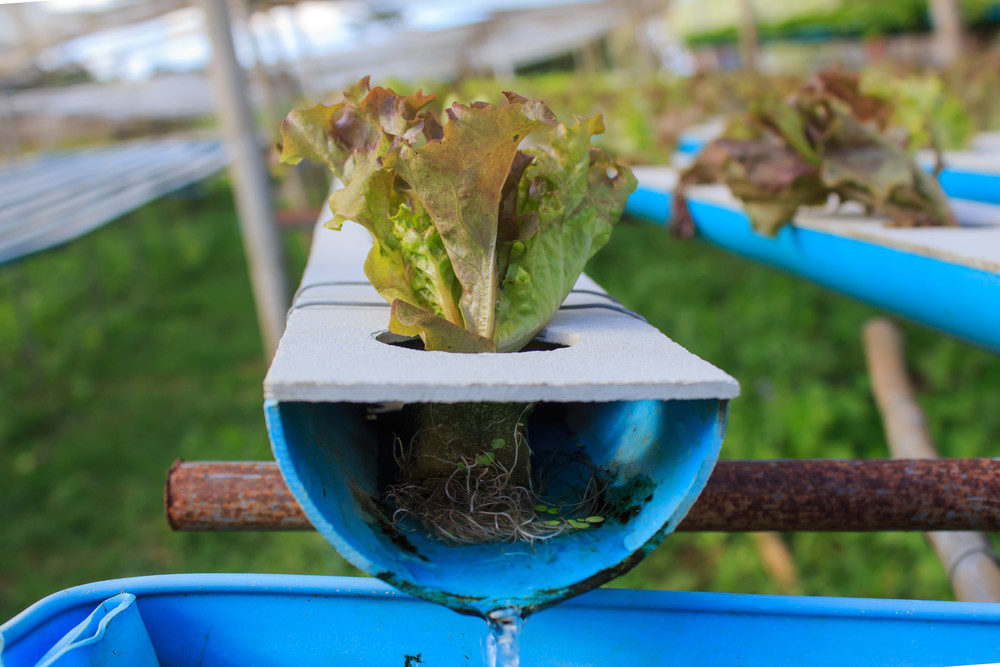
The large size of the fish tank containing gallons of water and fish makes it difficult to move the system once it is set up. So the location should be carefully selected.
The plants in the system thrive in good sunlight, so the grow bed should be kept where it can receive at least 5-6 hours of direct sun.
It ensures luxurious plant growth and good yield.
However, light exposure can trigger the growth of green algae in the water and on the sides of the tank, so the fish tank should be located away from sunlight.
If that is not possible, grow floating plants like water lettuce or Eichornia in the water so that they shield the water. You can even have some foam rafts with edible plants floating in the tank.
Avoid keeping the system under trees that drop flowers or leaves. The rotting plant materials can overstrain the system.
Some plants may contain toxic chemicals that can be harmful to the fish.
The Right Media for the Grow Bed
The grow bed media is where most of the bacterial decomposition of waste takes place. It should be non-reactive and ideally have a neutral pH value.
Other main considerations are the weight of the media, availability, and the expense involved.
Particulate size is also important. Small particles get compacted easily and provide fewer air spaces.
If the media is too big in size, the total surface area available to the bacterial colonies is less, reducing the overall efficiency of the system.
Some of the commonly used media are:
Crushed rock – Any locally available crushed rock should do, but some rocks that have high lime content can raise the pH of the system. If testing with alcohol produces a fizzy reaction, it is better avoided.
River gravel – If you can find river gravel of the right particulate size, it is a great but inexpensive option.
Expanded clay pellets – This hydroponics staple has the advantage of being extremely light and porous. But it can be prohibitively expensive when you intend to make large grow beds.
A half and half mix of rock and clay pellets is a good option since it helps reduce the total weight of the grow beds while keeping the expenses down.
How To Start Your Aquaponics System
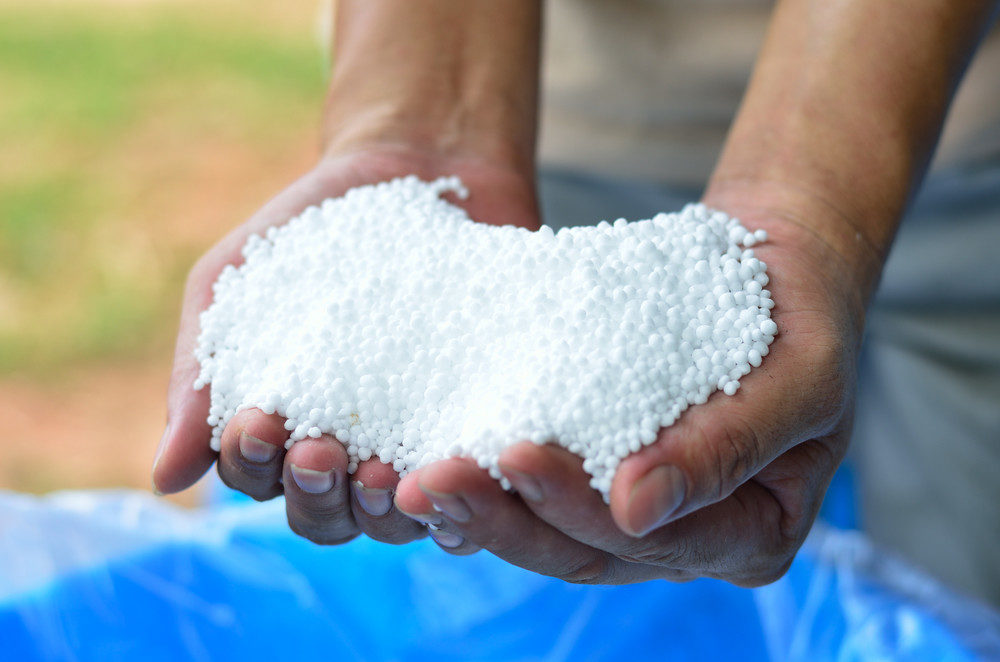
Before you can have a full-fledged aquaponics system with a well-stocked fish tank, the setup needs to be primed with microbes that drive the nitration cycle.
Without them, the waste products can accumulate to dangerous levels and can even kill the fish.
To cultivate the bacteria that handle ammonia, the same substance is first introduced into the system.
You can choose any of the good ammonia sources, including household ammonia as long as it does not contain additives like scents and colors.
Some of the commonly used ammonia starters are:
Urea fertilizer– It breaks down into ammonia, but use it sparingly to avoid overdose.
Urine – It is a good source, and comes free. It is better to store the urine for a few days before tipping it in. If the donor is taking antibiotics, it may destroy the bacterial colonies.
Fish food – When fish food is added to the aquaponics system, it slowly breaks down, releasing ammonia.
Rotting fish – The rotting process generates ammonia, and may even contribute some microbes to the system.
Inexpensive live fish – Introducing a few cheap fish commonly available in aquarium trade can do the trick, but you should avoid feeding too much food to the fish. If the water clouds over with algal bloom, feeding should be discontinued until it clears up.
How To Stock Fish in the Aquaculture Tank
Fish is an essential component of the aquaponics system, but some types of fish are more suitable for this than others.
What is right for you may depend on the local climate and availability of stock, as well as your purpose in rearing the fish.
In warmer areas, Tilapia, Barramundi, Perch and several types of Carp are preferred for their fast growth. Some people who want to harvest the fish less frequently choose slow growing types.
In colder areas, Trout is a great choice for year-round culture, but if you have warm summers, they have to be harvested and the tank restocked with another type that can handle the heat.
Those who do not intend to eat the fish prefer decorative varieties such as Goldfish or Koi.
Freshwater prawns, crayfish and mussels are great additions to any aquaponics system as long as they coexist peacefully with one another.
Applicable regional rules should be taken into consideration when you choose the fish.
Channel catfish is popular in the United States, but some states may have restrictions on Carps as they are considered invasive in many areas.
Fish and Plant Density
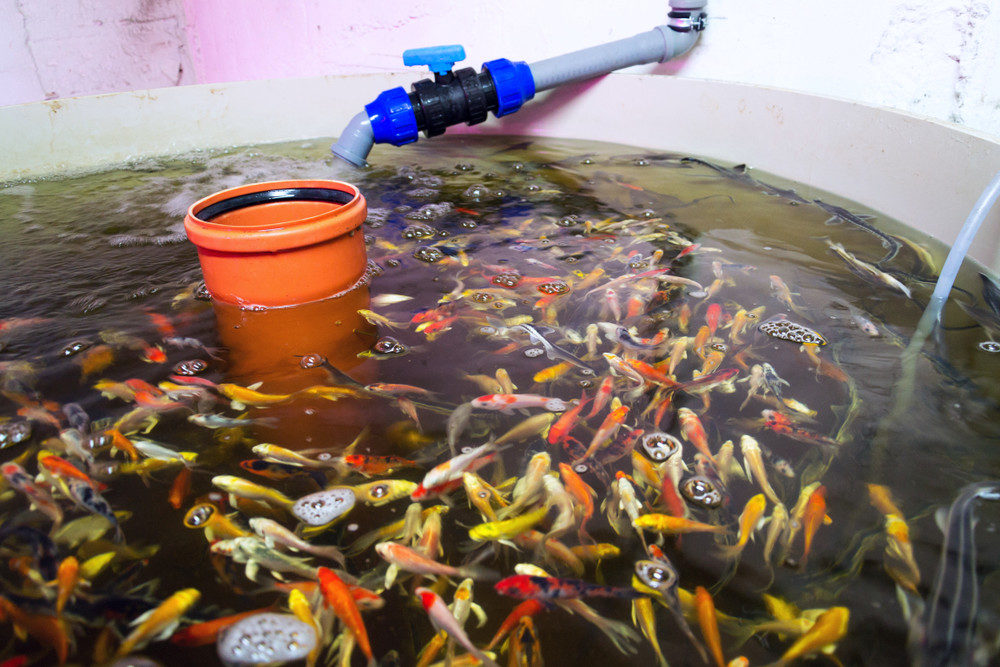
The number of fish you can stock depends on the size of your aquaculture tank as well as the capacity of the grow beds to clean and recycle the wastewater.
Technically, you can have as high a fish density as you have in a regular aquaculture system.
Also, the more grow beds you have, the more fish you can keep, provided there’s enough room in the fish tank.
However, it is ideal to stick to one pound per 10 gallons of water rule for a stress-free aquaponics set up.
Oxygen depletion and quick buildup of toxic substances in the water can put the entire system at risk, so aim for lower fish density.
As for the plants, you can plant them really close together as their roots are constantly bathed in nutrient-rich water, eliminating all competition. Even very low fish density can provide for a large number of plants, so there’s no need to be conservative here.
You can grow salad greens, herbs, tomatoes, eggplants, and almost anything that you fancy. The luxurious growth may spill over the sides, so leaving a 2ft walking space between beds will make harvesting easier.
Troubleshooting
- Pests in the grow bed – Pests such as slugs and worms can be expelled by flooding the grow bed occasionally.
- Algal bloom – It is usually seen before the system develops sufficient microbial load to handle the nutrients in the water. Cut down fish food until it clears.
- Algal growth on the sides if the tank – Too much light exposure causes green algae to grow. Place the fish tank away from the sun or cover it with dark fabric.
- Low water levels – Water loss through direct evaporation and transpiration by plants necessitate occasional topping up. You may need to do it more often when the weather is warm and windy.
- Nutritional deficiencies – It is rarely seen in an aquaponics system. Seaweed extract can be used as a general purpose fertilizer. Specific deficiencies can be remedied by the addition of potassium, iron or other micronutrients in very small quantities.
An established aquaponics system often runs without any trouble, but good maintenance ensures a longer life.
Water quality testing at regular intervals is essential, and any amendments required should be done immediately.
Read Next: 18 Delicious Edibles You Can Grow Indoors All Winter
Pin This To Save For Later
